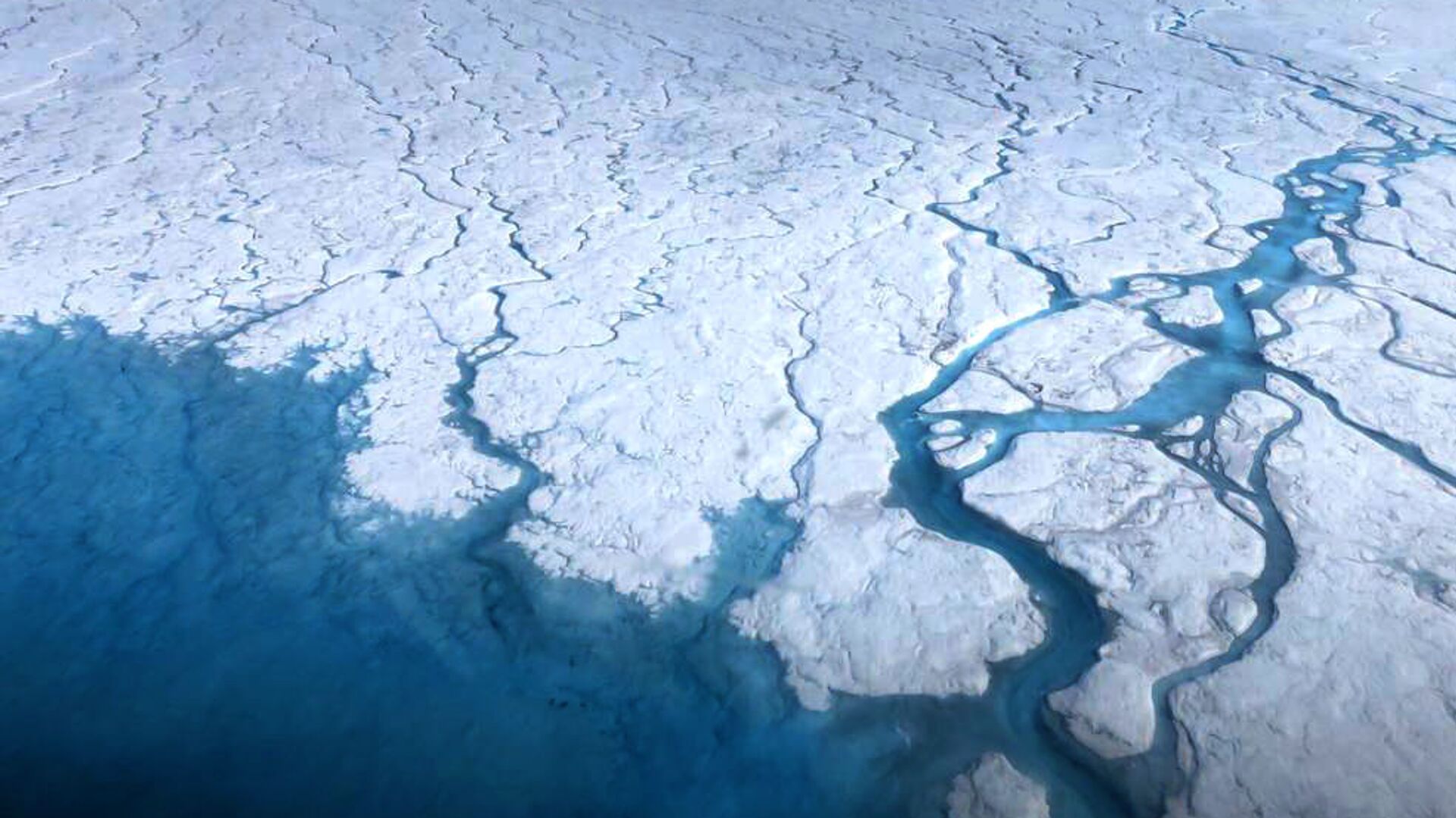https://sputnikglobe.com/20220322/massive-wall-of-ice-forced-first-humans-to-arrive-in-the-americas-via-boats-study-claims-1094097630.html
Massive Wall of Ice Forced First Humans to Arrive in the Americas Via Boats, Study Claims
Massive Wall of Ice Forced First Humans to Arrive in the Americas Via Boats, Study Claims
Sputnik International
Until now, scientists had assumed that the first people to arrive in the Americas traveled over a broad bridge of land that connected present day Siberia to... 22.03.2022, Sputnik International
2022-03-22T22:19+0000
2022-03-22T22:19+0000
2022-03-22T22:17+0000
study
ice age
humans
migration
north america
south america
central america
https://cdn1.img.sputnikglobe.com/img/07e5/08/1b/1083735397_0:31:985:585_1920x0_80_0_0_6305ed4e4b32d49d0bf1736ee8737b00.jpg
How exactly did the first Americans enter this New World during the height of the Ice Age? For the longest time scientists believed they traveled over a bridge made of land often referred to as Beringia, as it now exists beneath the Bering Sea.There existed a giant wall of ice that spread over what is now known as Canada, almost 300 stories high - that’s over 3,200 feet. But scientists believed there existed a passage in this behemoth block of ice, a seam between east and west sheets of ice that researchers thought “unzipped” towards the end of the Ice Age.Until recently, scientists had believed the first Americans, known as the Clovis people, traveled through this “ice-free corridor” but a study led by Jorie Clark, a geologist and archaeologist at Oregon State University, has made the discovery that the ice-free corridor did not open until just 13,800 years ago.The group of researchers were able to learn the age of the ice-free corridor (IFC) by dating boulders carried by glaciers from their original location. By learning the age of the boulders through the measurement of beryllium-10, they estimated the IFC was covered in ice sheets anywhere from 1,500 to 3,000 feet high.This new information has prompted researchers to assume that the earliest Americans traveled by boat along the Pacific coast to reach their new home.In addition, archaeologists discovered stone artifacts in central Mexico that were at least 26,500 years old, well before the Clovis people, who were the first to migrate from Asia to the Americas, settled on the continent 13,400 years ago.Archeologists have yet to find traces of boats used by these people, although another theory suggests that people may have arrived in the Americas before the glaciers closed off the route.“That’s one of the main outstanding questions in the field,” says anthropological geneticist Jennifer Raff, who was not part of the study. “Whether or not people were in the Americas before the height of the glacial maximum.”The study was published in Proceedings of the National Academy of Sciences.Let's stay in touch no matter what! Follow our Telegram channel to get all the latest news: https://t.me/sputniknewsus
north america
south america
central america
Sputnik International
feedback@sputniknews.com
+74956456601
MIA „Rosiya Segodnya“
2022
Mary Manley
https://cdn1.img.sputnikglobe.com/img/07e6/01/0b/1092187887_0:0:2048:2049_100x100_80_0_0_0c2cc4c84f89aff034cc55bb01fb6697.jpg
Mary Manley
https://cdn1.img.sputnikglobe.com/img/07e6/01/0b/1092187887_0:0:2048:2049_100x100_80_0_0_0c2cc4c84f89aff034cc55bb01fb6697.jpg
News
en_EN
Sputnik International
feedback@sputniknews.com
+74956456601
MIA „Rosiya Segodnya“
Sputnik International
feedback@sputniknews.com
+74956456601
MIA „Rosiya Segodnya“
Mary Manley
https://cdn1.img.sputnikglobe.com/img/07e6/01/0b/1092187887_0:0:2048:2049_100x100_80_0_0_0c2cc4c84f89aff034cc55bb01fb6697.jpg
study, ice age, humans, migration, north america, south america, central america
study, ice age, humans, migration, north america, south america, central america
Massive Wall of Ice Forced First Humans to Arrive in the Americas Via Boats, Study Claims
Until now, scientists had assumed that the first people to arrive in the Americas traveled over a broad bridge of land that connected present day Siberia to Alaska. Scientists are now rethinking that theory, but what’s stumping them? A giant wall of ice.
How exactly did the first Americans enter this New World during the height of the Ice Age? For the longest time scientists believed they traveled over a bridge made of land often referred to as Beringia, as it now exists beneath the Bering Sea.
There existed a giant wall of ice that spread over what is now known as Canada, almost 300 stories high - that’s over 3,200 feet. But scientists believed there existed a passage in this behemoth block of ice, a seam between east and west sheets of ice that researchers thought “unzipped” towards the end of the Ice
Age.
Until recently, scientists had believed the first Americans, known as the Clovis people, traveled through this “ice-free corridor” but a study led by Jorie Clark, a geologist and archaeologist at Oregon State University, has made the discovery that the ice-free corridor did not open until just 13,800 years ago.
The group of researchers were able to learn the age of the ice-free corridor (IFC) by dating boulders carried by glaciers from their original location. By learning the age of the boulders through the measurement of beryllium-10, they estimated the IFC was covered in ice sheets anywhere from 1,500 to 3,000 feet high.
This new information has prompted researchers to assume that the earliest Americans traveled by boat along the Pacific coast to reach their new home.
In addition, archaeologists discovered stone artifacts in central Mexico that were at least 26,500 years old, well before the Clovis people, who were the first to migrate from Asia to the Americas, settled on the continent 13,400 years ago.
“We now have robust evidence that the ice-free corridor was not open and available for the first peopling of the Americas," Clark
said, adding that “there is still a lot to learn about whether they actually did come down the coastal route, and if so, how did they travel? We need to find archaeological sites from the area."
Archeologists have yet to find traces of boats used by these people, although another theory suggests that people may have arrived in the Americas before the glaciers closed off the route.
“That’s one of the main outstanding questions in the field,”
says anthropological geneticist Jennifer Raff, who was not part of the study. “Whether or not people were in the Americas before the height of the glacial maximum.”
The study was published in Proceedings of the National
Academy of Sciences.
Let's stay in touch no matter what! Follow our Telegram channel to get all the latest news: https://t.me/sputniknewsus 



